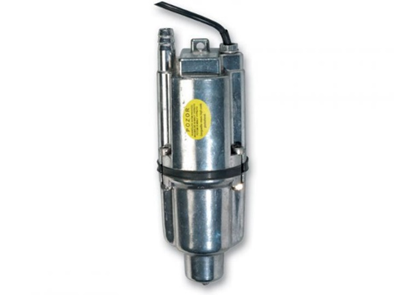Drawing clean groundwater from your own source is possible throughout the year and is not hindered by outdoor frost. However, if you do not use the well or borehole for water in winter, it is absolutely necessary to properly winterize. The water source and distribution system, submersible pumps for boreholes or wells, self-priming pumps, domestic water works, irrigation systems and other components of the water system, in which water could freeze, must be protected against frost, to prevent their destruction. Plan the winterization of the well and borehole before the arrival of the first frosts and proceed slowly and carefully.
.jpg)
The water source itself does not require any special care during the winter, however, it can be contaminated with polluted water and damage the water system due to frost.
Water from melting snow and rains brings a high amount of impurities, which accumulate in both the well and borehole. Settled impurities can significantly affect the yield of the spring and damage the pump when water is pumped again.
Once the water freezes and turns into ice, it expands in volume. If at that time it is in the plumbing or pump, the material will crack due to the great force of the ice, effectively tearing apart the pipes and pump from the inside. When the ice melts, water seeps into the surroundings (floors, walls, etc.). In such a case, you may return to a cottage to find an unpleasant surprise in the form of a flooded house and destroyed walls.
Disconnect and winterize the pump. Remove the submersible water pump from the well/borehole and winterize other components of the water system (water pipes if they are not placed at a sufficient depth, water meter, dry run protection, etc.). Drain water from the hand pump.
Repair any cracks in the above-ground part of the well/borehole.
Secure the well/borehole with a wide concrete collar on the surface around the casing, which also serves as a waterproof cover. Check the cover and repair any cracks and leaks.
Insulate the concrete collar, preferably with polystyrene or another suitable insulation. It should also have another water-resistant layer (e.g., thicker plastic sheeting) and be sturdy and weighted enough to withstand wind and snow.
Almost all pumps, whether submersible pumps for boreholes, submersible pumps for wells or self-priming pumps and domestic water works, are not frost-resistant. If you pump water throughout the year, it must be stored at a sufficient depth where water does not freeze. If the pump is not used in winter and is located in a place where temperatures drop below freezing, it is necessary to winterize it. Otherwise, there is a risk of damaging the pump, reducing its lifespan and it could even lead to complete destruction of the pump.
Disconnect the pump from electricity and if it is stored in a well or borehole, remove it. Drain the water from it and store it in a safe place, where it does not freeze. The exact procedure for draining the pump varies depending on the type and construction of the pump, so follow the instructions for your specific pump.
To prevent damage to the water supply system, don't forget about other elements:
Close the main water supply and secure it against unintended reopening.
Drain the water distribution system.
Winterize the irrigation system.
Winterize and clean water filters
Winterize the water meter.
Leave valves and faucets half-open or replace them with frost-resistant versions (these can remain closed, preventing unintentional water pumping).

Wait for suitable weather before resuming water pumping in order to prevent freezing of water in the system during the ongoing cold temperatures in spring.
First, check for any damage to the water pipes, well, or borehole. Before pumping water, clean the well or borehole, and also clean and maintain the pump. If the water from the source is intended for drinking, consider having it analyzed for safety.